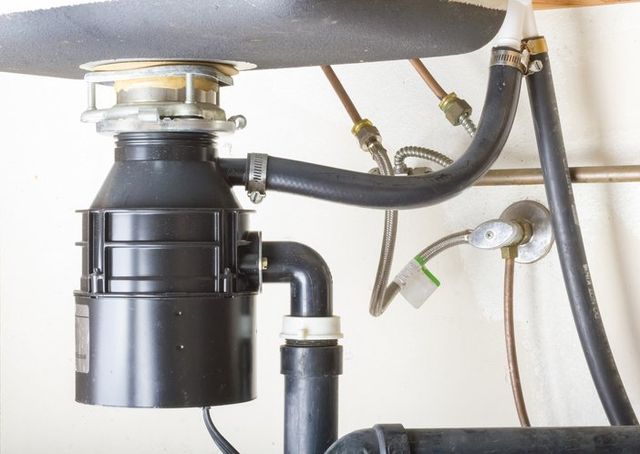Top Tips for Fixing a Leaking Waste Disposal Unit
Top Tips for Fixing a Leaking Waste Disposal Unit
Blog Article
This post in the next paragraphs involving Why Is is especially captivating. Read it for your own benefit and figure out what you think of it.

Waste disposal unit are crucial kitchen devices that help in throwing away food waste successfully. However, a leaking waste disposal unit can be an irritating and messy problem to take care of. The good news is, several leakages can be fixed easily with a few simple steps. In this article, we will discuss how to fix a dripping waste disposal unit successfully.
Intro
Garbage disposals are installed under cooking area sinks and are made to shred food waste right into smaller items, enabling it to go through the plumbing system quickly. While these tools are usually dependable, leaks can happen gradually as a result of damage, loosened connections, or damages to the unit.
Typical Root Causes Of Leaks in Garbage Disposals
Worn Seals and Gaskets
Seals and gaskets play a crucial duty in avoiding water from dripping out of the garbage disposal. Gradually, these components can degrade, leading to leaks around the disposal device.
Loose Connections
The connections in between the waste disposal unit and the plumbing system can end up being loose gradually, causing water to leak out during operation.
Splits or Openings in the Disposal Device
Physical damages to the waste disposal unit, such as splits or openings in the real estate, can likewise lead to leaks.
Identifying the Resource of the Leakage
Before attempting to fix a leaking waste disposal unit, it is vital to determine the source of the leakage. This can typically be done via visual evaluation or by conducting basic examinations.
Visual Inspection
Inspect the garbage disposal unit thoroughly for any type of indications of water leakage. Pay very close attention to areas around seals, gaskets, and connection factors.
Examining for Leakages
One method to check for leaks is by running water through the disposal device and looking for any noticeable signs of leak.
Tools and Products Needed for Fixing a Leaking Garbage Disposal
Prior to beginning the repair service process, collect the required tools and products, consisting of a screwdriver, adjustable wrench, plumbing's putty, replacement seals or gaskets, and epoxy or patching material for repairing splits or openings.
Step-by-Step Guide to Repairing a Dripping Garbage Disposal
Turn Off the Power
Before trying any repair services, guarantee that the power to the garbage disposal unit is switched off to prevent the danger of electric shock.
Find the Leak
Determine the exact place of the leakage and identify the reason.
Tighten Connections
Make use of a wrench to tighten any type of loosened links between the disposal system and the pipes system.
Replace Seals or Gaskets
If the leak is because of worn seals or gaskets, get rid of the old components and replace them with brand-new ones.
Patching Splits or Openings
For cracks or holes in the disposal unit, use epoxy or an appropriate patching product to secure the broken location.
Examining the Waste Disposal Unit After Repair
Once the repair is complete, test the garbage disposal by running water through it to ensure that the leakage has been solved.
Preventive Upkeep Tips to Avoid Future Leakages
To avoid future leakages, it is necessary to execute normal maintenance on your waste disposal unit. This consists of keeping it clean, preventing putting non-food items or difficult things down the disposal, and periodically looking for leaks or other issues.
Verdict
Finally, dealing with a leaking garbage disposal is a fairly straightforward procedure that can be completed with standard tools and products. By following the actions outlined in this post and exercising precautionary upkeep, you can maintain your garbage disposal in good working problem and stay clear of costly repair services in the future.
What to Do About a Leaking Garbage Disposal
A leaking garbage disposal often goes unnoticed until you confront a sopping cabinet, a foul-smelling puddle, or an audible drip-drip-drip from the unit. The fix can be frustrating, too, because the leak can stem from a number of components in the system. Fortunately, with a little sleuthing, you can zero in on the leak and—depending on the exact location—stop the icky oozing and repair the component that caused it. Worst case scenario, if it turns out that the garbage disposal must be replaced, installing a new one is a reasonable do-it-yourself task for those with basic plumbing skills. Read on to keep the cash you’d otherwise hand over to a pro.
Prepare to find the leak
Prior to testing the garbage disposal for leaks, unplug it at the wall outlet and turn off the power from the breaker box to prevent electrical shock. Then insert a watertight sink stopper into your sink drain and wipe the unit dry with a clean cloth. In any handy container, mix a few drops of food coloring into a few cups of water, and pour the dyed water onto the sink stopper to help you locate the leak.
Investigate the source
the top, where the disposal meets the sink drain the side, where the dishwasher hose or main drain pipe connects to the disposal or the bottom of the unit Inspect each of these locations while gliding a light-colored rag over the unit; the dyed water will readily show on the rag and reveal the location of the leak. If a leak isn’t immediately apparent, remove the sink stopper and pour a few more cups of dyed water down the sink drain, then check for leaks again. Leaks near the top of the unit are more likely to show themselves while the sink is plugged, while side and bottom leaks are more noticeable while the sink is unplugged.
The metal sink flange that sits directly inside the sink drain is typically sealed around the top with plumber’s putty (a clay-like sealant) and then secured from under the sink with bolts. If the plumber’s putty deteriorates, or the bolts loosen, the flange can no longer form a watertight seal between the sink drain and the disposal—which could cause a leak at the top of the unit.
To reseal the leaky flange, you must first detach the garbage disposal. Start by loosening the screws securing the main drain pipe to the disposal, then loosen the screws in the metal clamp securing the dishwasher hose to the disposal and detach the drain pipe and dishwasher hose from the disposal. Loosen the screws in the mounting ring that connects the disposal to the metal mounting assembly beneath the sink, then pull down the disposal and carefully set it on a clean, dry surface. Loosen the bolts in the mounting assembly with a wrench, then pull down the mounting assembly and set it near the disposal.

I came across that piece about Why Is My Garbage Disposal Leaking From the Bottom? when doing a lookup on the internet. For those who appreciated our blog post please be sure to pass it around. I value reading our article about Why Is .
Call Today Report this page